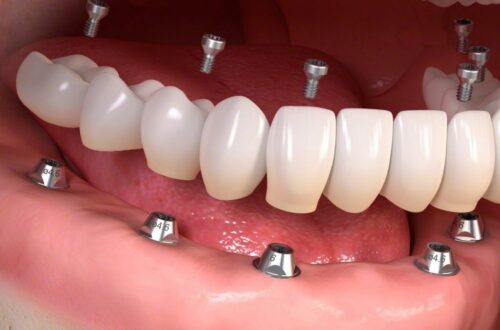
What Is A Dead Tooth? And What To Do About It
When you think of tooth decay, what pops into your head? A cavity? Maybe you think of the adult who is constantly sucking on candy or sugary drinks in an attempt to quench their thirst. Or maybe you picture a child with braces and a mouthful of chalky toothpaste. However, most people don’t think about teeth that are decaying beyond repair. What is a dead tooth and how do you know if one exists? If your tooth has deteriorated beyond repair, it is time to schedule an appointment with your dentist. You should also know that not all cavities are created equal. Some cavities are more damaging than others and this is why some teeth decay faster than others. So what exactly is a dead tooth? Let’s take a look:
Did you know that a very small number of people of the same age have missing teeth? What rarely, rarely do I pay attention to the fact that this is a serious problem! Deficiencies remaining without the need to maintain until the bone disappears, then it is necessary to rebuild the jaw bone. In order not to support it, take care to fill in the gaps. Update to be supplemented with additions as part of Implanty Poznań services.
What Is A Dead Tooth?
A dead tooth is a tooth that is in a very advanced stage of decay. If there is no trace of a tooth in your mouth, then you may have a dead tooth. And the good news is that you can lose a tooth without it being a big deal. But first, let’s talk about what causes a dead tooth. Dead teeth, also known as a root-filled tooth, form when your tooth decays beyond the point where the tooth is able to survive and repair itself. The reason a tooth becomes dead is usually a combination of severe damage and the inability of the tooth to repair itself. If you have a tooth that is severely damaged and can’t repair itself, then it will gradually die over the course of several months. If you brush your teeth carefully and don’t damage the area around the dead tooth, then the tooth will eventually fall out on its own.
Signs of a Dead Tooth
– There is no tooth present in your mouth. – You have a habit of biting down on your tongue. – You have a habit of chewing on pencils or other hard items. – You have a habit of grinding your teeth. – You have bleeding gums. – You experience a sharp pain in your mouth when you yawn.
How to know if your tooth is dead
There are a few ways you can know for sure that your tooth is dead. The easiest way is to have a tooth pulled. If the tooth was dead, then it will be easy to tell when it’s out. If that doesn’t work, you can take a look at your mouth. If you notice that your tooth is missing but there’s no blood or mushy bits surrounding the area, then it’s most likely dead. If you’re not sure, you can also try checking your bite. If your bite is off and you’re missing a tooth, then you can be pretty sure that tooth is dead.
Treatment for a Dead Tooth
The good news is that losing a tooth is always easier than gaining one. If your dead tooth isn’t causing you any discomfort or pain, then there’s no need to rush out and get it removed. You can simply wait for it to fall out on its own. If your dead tooth is causing you some pain or discomfort, then you can have a doctor remove it. Most dental offices will be happy to do this for you (for a small fee, of course). If you have healthy teeth remaining, then you can brush them gently and regularly to help your dead tooth decay at a slower rate. You can also chew sugarless gum or suck on sugarless fruit snacks to keep your teeth strong.
Conclusion
A dead tooth is a tooth that has died and decayed beyond repair. It can happen naturally, but it is more common in advanced decay cases. If your tooth is dead, you can lose it on its own without any major problems. There are certain things that you can do to keep your remaining teeth healthier and help your tooth decay at a slower rate. So when is a tooth dead? When there is no longer any trace of the tooth present in your mouth. But don’t worry, you can still brush your teeth and eat without any issues. A dead tooth does not affect your daily life in any significant way.



